Here are some things we found surprising about Japan as a whole – added to the surprises in Kyoto, Osaka, and Tokyo specifically:
Attire
- All of the locals are well-kempt. You don’t see people with loose threads or worn spots or pills on their sweaters or worn-out shoes. It’s not that they don’t have hand-me-downs, but that they seem to treat their clothes better, or to keep them for less time. The Amerika-mura neighborhood of Osaka was full of used clothing stores, but I wouldn’t have believed it if I hadn’t seen the signs saying ‘already-worn.’ We even started playing a game on the Tokyo subway in which we would look at people’s feet and only look up when we got to a less-than-nice pair of shoes: the owner was inevitably Western.

- People dressed for work generally wear black suits (pants or skirt) with a plain white dress shirt and a tie (for men). We’ve seen a few gray suits and a few white dress shirts with stripes on them – but that was primarily in a trendy part of town.
- It is normal for children or adults to wear masks around. No one stares at people wearing them, and stands sell them like they might offer hot dogs or purses. We saw two kids sporting masks to visit Osaka Castle and several teens wearing them at the Kanda Matsuri Festival <link coming>, for example – and a stand selling them.

- A lot of people wear jeans that are cuffed or rolled up. I think it’s just the current fashion, but it’s very common right now.
- Fancy, uber-feminine dresses are quite popular. They call the style Lolita, and it also comes in a goth version. The home base for it is the Harajuku neighborhood of Tokyo, though plenty of other unusual styles can also be found there. Our first exposure was when we sat next to two girls in an Osaka cafe wearing Alice in Wonderland dresses with poufy skirts and ruffles at the high neck. They didn’t appear to be coming from work or anything, so it was just a fashion choice. We even ended up buying a skirt of this style because it seemed like so much fun!

- Some women wear kimonos around town, and no one thinks much of it. We couldn’t find any consistent characteristics of these women: age, location, appearance, and everything else seemed to vary. Except their footwear: most were wearing flip-flops with special white socks that are worn with getta shoes!
- Umbrellas are a big deal here. On rainy days, everyone has one – and every bicycle has one on it, no matter the weather. (Yes, they ride with one hand on the handlebar and one holding the umbrella!) On sunny days, they are as common, with people using rain umbrellas to block the sun. They are all full-sized with a curved handle; I didn’t see any fold-up umbrellas except at one touristy place in Tokyo.
- Many people wear surgical masks, as stereotyped. Although some probably wear them all the time (a personal choice), the norm is for sick people to wear them, allowing those who aren’t sick to go without them. It was pretty neat to see this level of collaboration work on a large scale!
Children
- Preschool children wear identical hats in different bright colors, secured with rubber bands around their ears. It helps the teachers keep track of them.
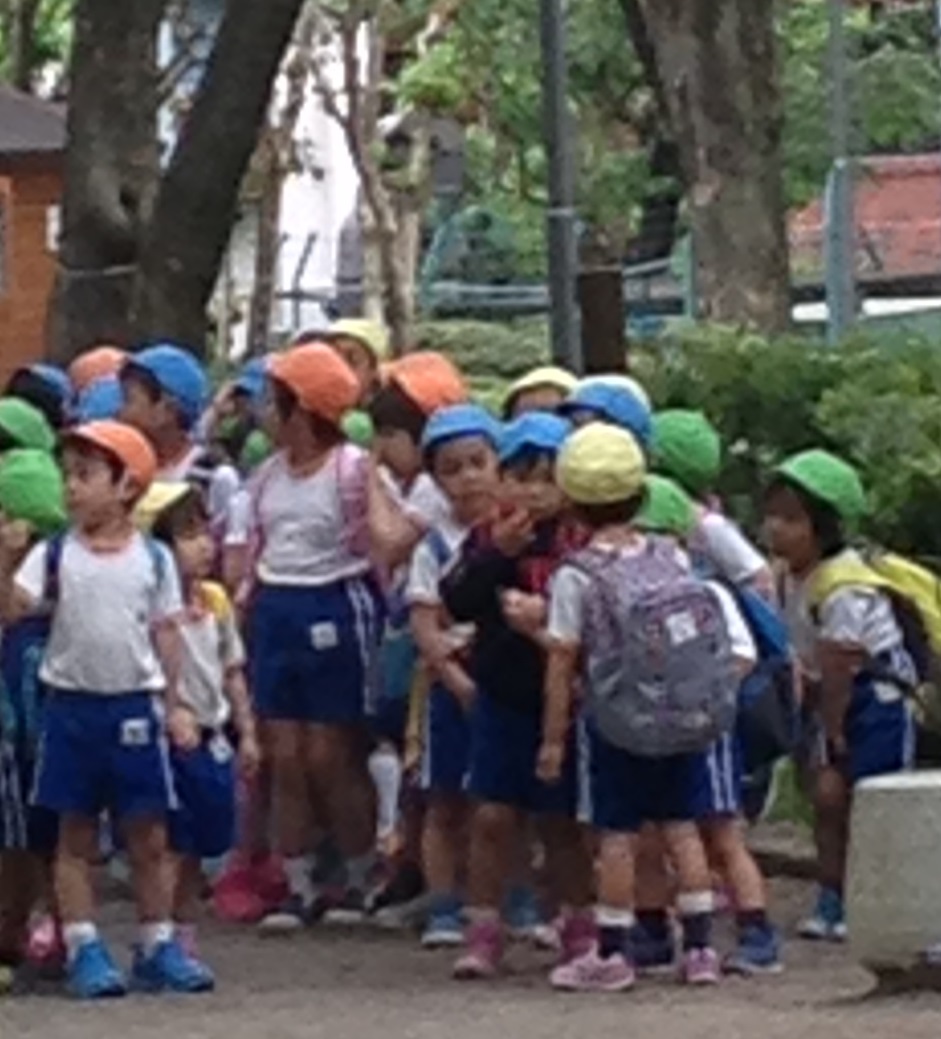
- We saw preschoolers/toddlers being carted around outside by teachers in a sort of playpen on wheels!
- The slides on kids playgrounds in Japan tend to be much longer – and more fun – than the ones in the US.
- Babies are often carried in front carriers, even very young ones. To me, there seem to be more of them out (and quiet!) than in the US.
- Generally, children are better-behaved than in the US. They tend to be quieter, better able to entertain themselves, and less demanding. We’ve experienced this throughout Asia.
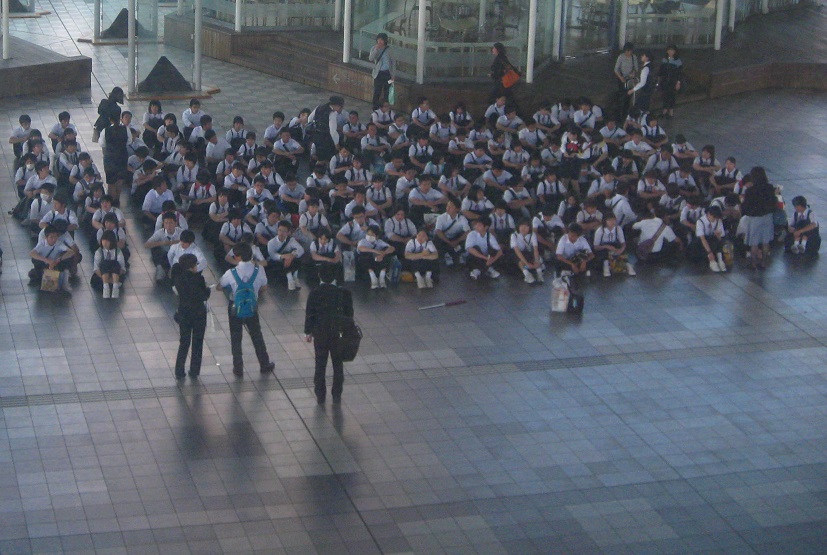
- Grade school-aged children take the subway or walk from school in pairs or small groups – without an adult. These kids can be as young as six, and they do this even in major cities like Tokyo! This has to do with safety, but also with the high expectations of kids.
Hygiene
- You can smoke indoors! This is a big one, because I am quite sensitive to smoke. I also don’t understand this well, because smoking while eating seems like it would have a big impact on what you are able to taste, but that’s a different matter. On the flip side, you cannot smoke while walking outside!
- Most women dye their hair a shade of red – or a shade of blonde that makes black hair look red. It’s interesting to watch families walking outside, with the men and boys having pitch black hair, and the women all with red highlights or full heads of hair. B tried to claim that this was their natural hair color, and it’s true that the red generally looks very natural: good job stylists! However, I am positive that it is bottle-supplied, based on my more extensive knowledge of hair color (boy, there’s a thing to be proud of), based on the boys’ hair color, and based on the more poorly-done dye jobs we’ve seen. It’s interesting that this extends across most age groups, from the teen years through the fifties – and that an almost-identical red color is used. It makes it clear that the goal isn’t to stand out, but to avoid strictly black hair.
- There are plenty of places that advertise make-up services, but they call them just “make” (in English), not “make-up.”
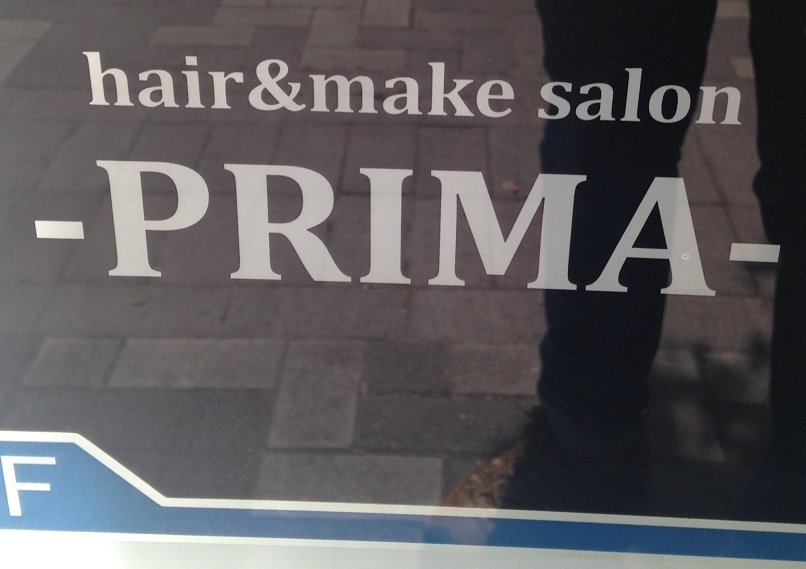
- Food may be inexpensive, but even the cheapest hair salon is expensive! $35 for a basic haircut! Even a simple beard trim was going to be $30 there – while B gets it done for $5-$10 in the US. They have a Supercuts/Great Clips-style placed called QB House, but it seems to be primarily for students (and it’s not Japanese).
- People tend to be thin, as stereotyped. But, perceptions of ‘fat’ are not as bad as many foreigners assume them to be. And they do make clothing in large and extra-large sizes.
- Tattoos are still taboo in Japan. Many onsen (Japanese spas) do not allow anyone in with a tattoo. Moreover, having one is associated with being a Yakuza, or Japanese mob member.
Facilities
- Many places – from subway stations to parks – have nice, clean, mechanized bathrooms that are free to use! This is very convenient and quite different from the US.
- Bathroom slippers are common. From one guide we read: “Often, you’ll be provided slippers to wear [in the house]. When you go to the restroom, you swap slippers to special toilet slippers. Remember to remove the toilet slippers when you leave the restroom. Wearing toilet slippers outside the toilet is the most embarrassing thing you can do in Japan.”
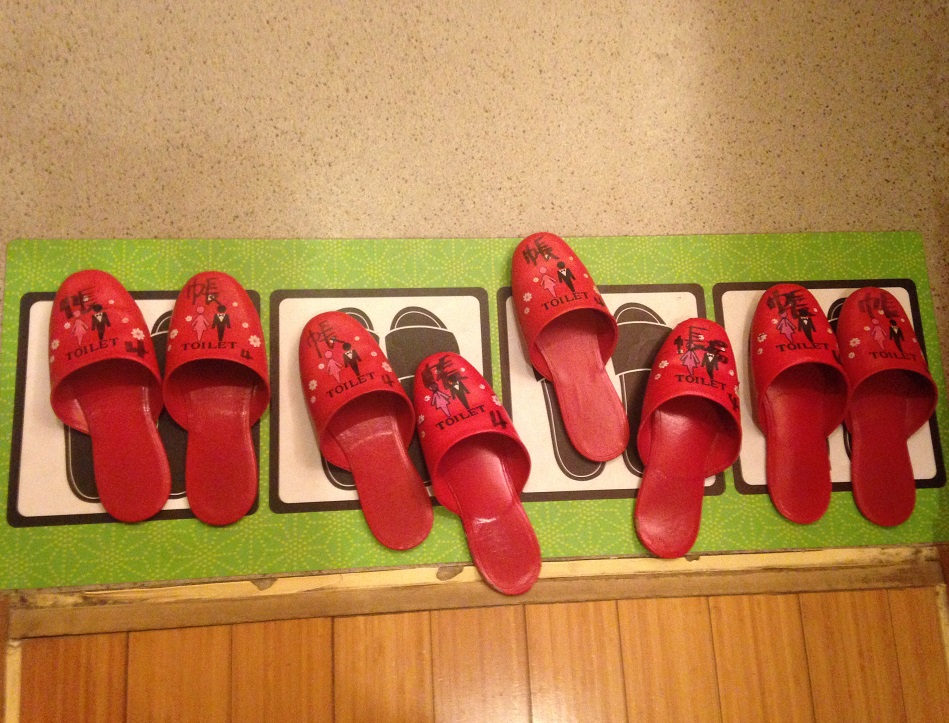
- Toilets here are… complicated and efficient. Most of them have a knob that same ‘big’ on one side and ‘small’ on the other, so you can turn it to the side you need for each flush. They also bring in clean water into a sink above the toilet, so you can wash your hands there, and then that water goes into the tank and gets used as toilet water.
- Most public restrooms lack a way to dry your hands (paper towel or dryer), and many also lack soap!
Waste
- Recycling and trash are sorted by people on their end and brought out to the street on different days of the week for collection. For example, burnables get put out on one day, while plastics go out on another. Based on the chart of waste management we saw at the Edo-Tokyo Museum <link coming>, this system seems to be working for them.

- Things are orderly and clean. We saw women sweeping the streets, though there was hardly anything to pick up except for errant leaves.
- This is especially impressive because there are so few trash cans anywhere. I imagine this is related to the need to sort trash, but it can be difficult for people who want to be considerate, but who don’t want to carry lots of trash around with them all day.
- Most people carry backpacks, and many around town had rolling luggage. Maybe that’s where they keep their trash?
Religion
- At (Shinto?) religious sites, there are two types of ‘offerings’ that people seem to leave. One is a wooden house-shaped thing with writing on it that people hang on a board; the other is white strips of cloth that they tie to tree branches. The five-sided wood is said to be a votive charm: you buy it and write your prayer request on it, and the priests pray on your behalf twice per day.

- At a Shinto shrine, you pay your respects and/or pray by doing this: throw a coin into a collections box or ring a bell, then bow twice, then clap your hands twice, then you take a few seconds (to pray?), and then you bow once.
- Many temples have rocks and small statues that have cloths around their necks, almost like bibs.
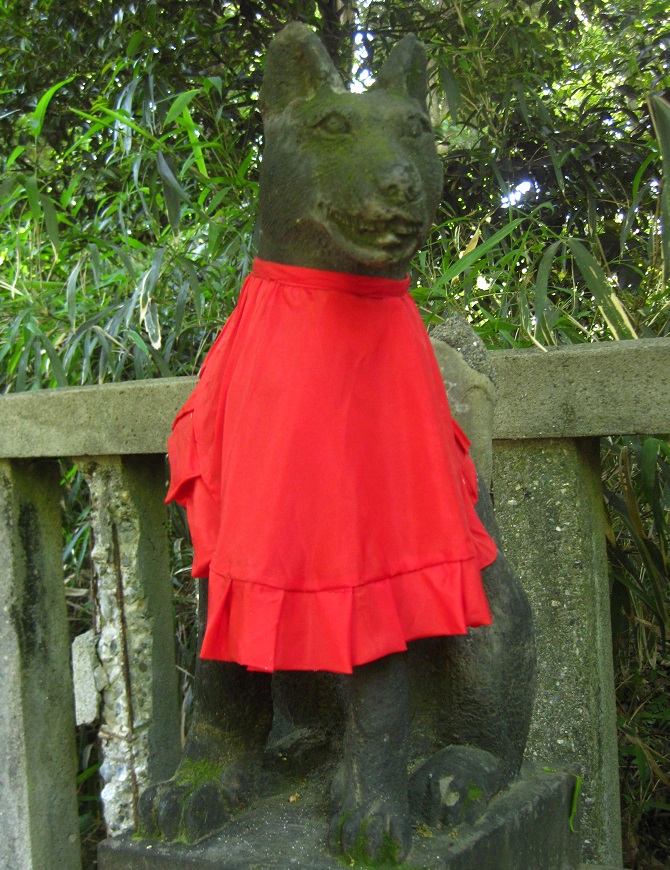
- In their homes and practice, people seem to honor both Shinto and the Buddhist shrines. A guide we had said that this makes the Japanese more open-minded, since they are open to two different religions. Though they seem to think of both more as a life philosophy (with deities) than a religion, per se.
- At cemeteries, graves have long, wooden sticks with writing on them beside the headstone. These are commemorations of the person that are recorded on the anniversary of their death. The family members gather to honor them and have a ‘stick’ made in memory. Generally, the more sticks at a grave, the longer the person has been dead.

- Several temples that I saw had signs that read, “May peace prevail on earth.”
- When you are in a temple complex, you do not want to step directly onto the threshold; instead, step across it. This is because some people believe that a spirit lives here. This seems to apply to Buddhist and/or Shinto temples.
Entertainment
- There are a lot of pachinko machines, in big rooms that look like the slot machine rooms in Las Vegas. They are everywhere, and they are loud and stuffy.
- Maid and butler cafes are a thing!
- Speaking of fun, one big thing about Japan is that the culture doesn’t make frivolity or fun solely the domain of children, like we do in the US. There are a lot mascots or dressed-up characters around town, and lots of adults stop to pose with them. Clothing trends are more for adults than for kids. Amusement parks are geared to grown-ups as much as to children. Manga/comics are not a kids-only activity, and many explanations or instructions in public places are animated. It is a big difference!
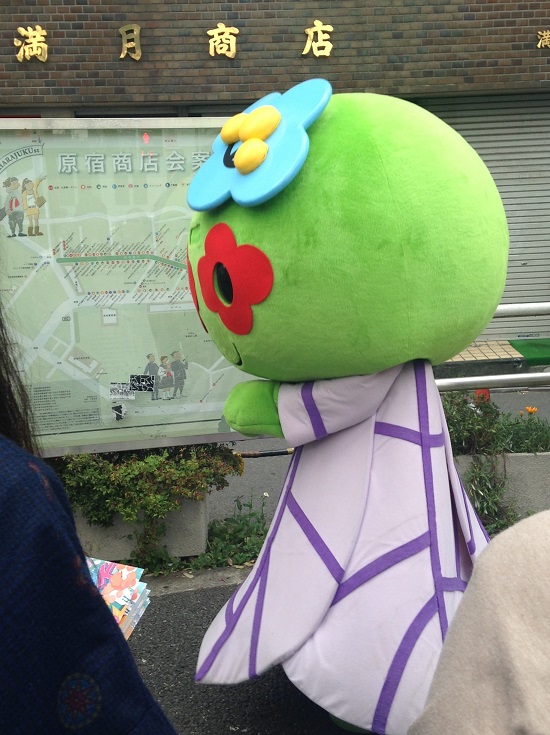
- They like baseball a lot in Japan. Some people say that it is their national sport, not sumo.
- It’s not just a stereotype: locals do take a lot of photos of themselves holding up the peace sign.
- Weddings are similar to those in the US, except that the receptions are shorter and generally don’t have dancing. As in the US, the ceremonies can be quite traditional and religious – or not.
Politeness
- They are not into PDA in Japan. Hand-holding is more common among younger couples, but other than that, not so much. Even putting my arm around B’s shoulder while sitting on the subway garnered me stares from some people on the train.
- Sometimes, people wait in line by taping a square to the ground in their “spot” and then going to sit or eat elsewhere. For example, I saw it with people purchasing tickets for a baseball game, for which the box office was not yet open. No one skips or moves other people’s squares, and people can return at the right time to claim their place (presumably, by the time that the box office officially opens).

- Love hotels are common here, since couples often live with parents. They rent a room for an hour or two to get some alone time. The rooms aren’t cheap, but the demand is clearly there, given the number of signs advertising hourly rates.
- It is considered impolite to talk on the phone indoors, since your house mates could be bothered by it. On the other hand, some guides say it is impolite to talk on the phone outdoors.
- People are generally very quiet in any shared space, from public transportation to entertainment venues.
- When people part – whether friends or business associates, they all bow very deeply to one another. It seems to happen even with neighbors bumping into each other while out, and it makes goodbyes longer than ones in the US. They also seem more formal, though it’s probably more accurate to say that they’re more respectful.
Food
- Many restaurants – especially more casual ones – have a bell on the table that you ring to call over your server. That way, (s)he is not constantly checking whether you are ready to order.
- Many restaurants also have a digital menu on something that resembles an iPad. There haven’t been translations on most of them, but there are usually photos that help clarify the items.
- The Japanese eat quickly and have a lot of fast food. Their fast food restaurants tend to have machines with buttons on which you order and pay. The machine prints out what you ordered on a small ticket stub, and you give that to the person behind the counter and sit down in front of them. They deliver your food to you within five minutes, generally. The food served varies, from rice with beef strips over it to ramen soup/noodles (not like the US kind) and in between.
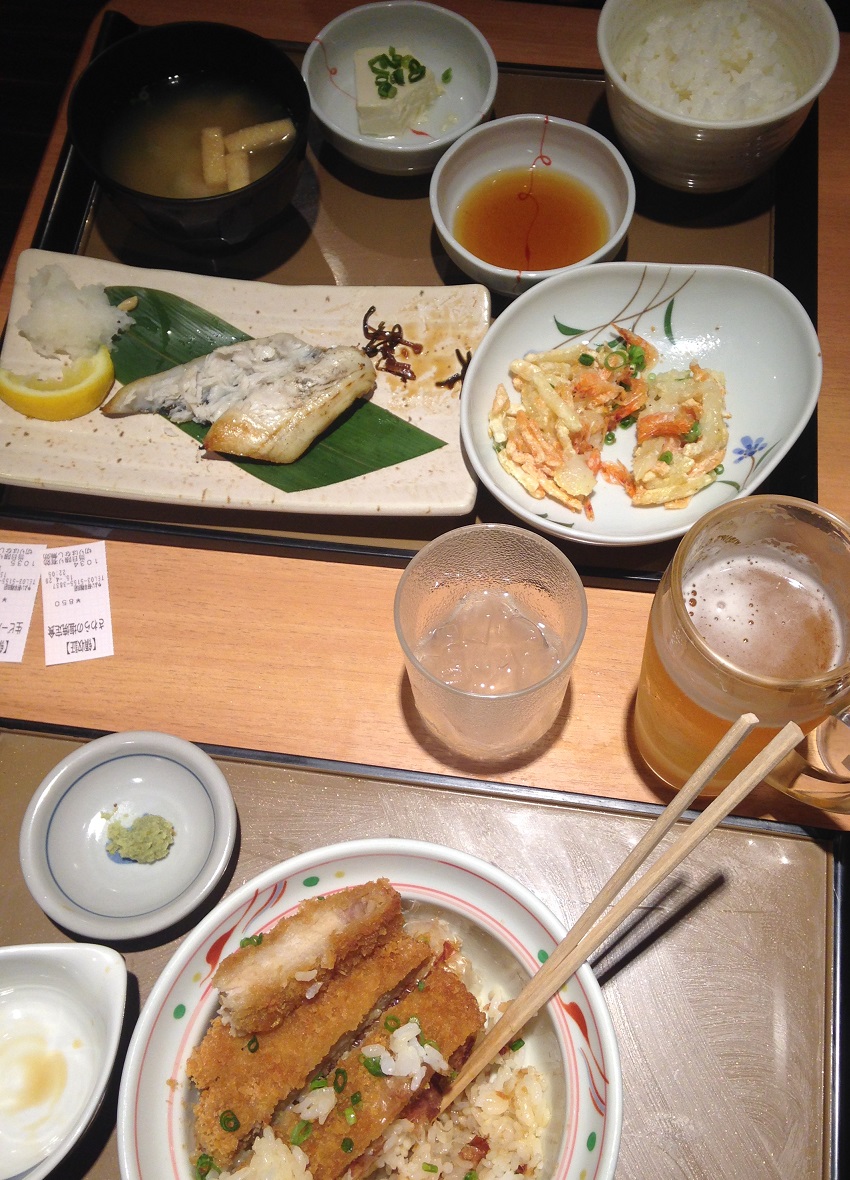
- When you visit a Japanese or sushi restaurant in the US, most of the staff will usually call out what I always assumed to be ‘Welcome!’ or ‘Hello!’ as soon as you walk in. Multiple people say it in an inadvertent round, and I figured it was a tourism thing. However, in Japan, this actually happens in restaurants. The sushi chefs and servers call out phrases when you enter and when you leave. And not only that, but all the cashiers at the 7/11 do it too! Arrivals and departures merit extended greetings all over Japan, it seems.
- Slurping your soup is considered a sign that you are enjoying and appreciating your food, so people do this in public all the time – and fairly loudly. Slurping drives me nuts. Thanks, mom!
- There are a relatively high number of French businesses – especially cafes and restaurants with names like ‘Bois de Vincennes’ or ‘Parisienne.’ Bakeries are particularly common.
- It is not considered polite to eat while walking. Instead, when people buy street food, they will simply stand next to the cart/window and eat their food there.
- Inside restaurants, eating while standing at a counter is quite common. Perhaps due to the limited space?
- Tipping is considered almost rude in Japan, as good service is expected. Everyone gives you exact change back and then expects you to leave.
- They always start the meal by giving you a wet towel for your hands. It is often hot.
- Many people shop daily or almost daily, so they use small shopping baskets instead of carts. The cashiers check out customers by scanning each item and then transferring it from the basket that the customer carried to another basket (that of the previous customer). They put a few plastic bags into the basket for you, and you pay. Then, you carry your basket to a side area, where you bag your own groceries; people seem to be fairly particular about the order and means of doing this. And the cycle continues.
Transit
- Not all maps in Japan are oriented with the top as North! Often, Up is the direction that you happen to be facing, which makes it easy to orient yourself.

- It varies whether you are supposed to walk on the right or the left side of subway station walkways. Generally, the people on the inside on turns are going down, but it wasn’t quite that simple. There were signs indicating the right way to go.
- On escalators, people stand on the left and walk on the right. On streets, people generally walk on the left side.
- There are black rubber curb-things that I think are used by cars. The interesting thing is that they have shapes on them that look like a Star of David. (On the other hand, swastikas are common temple symbols – though they pre-date Nazis by a lot and are not just in Japan.)
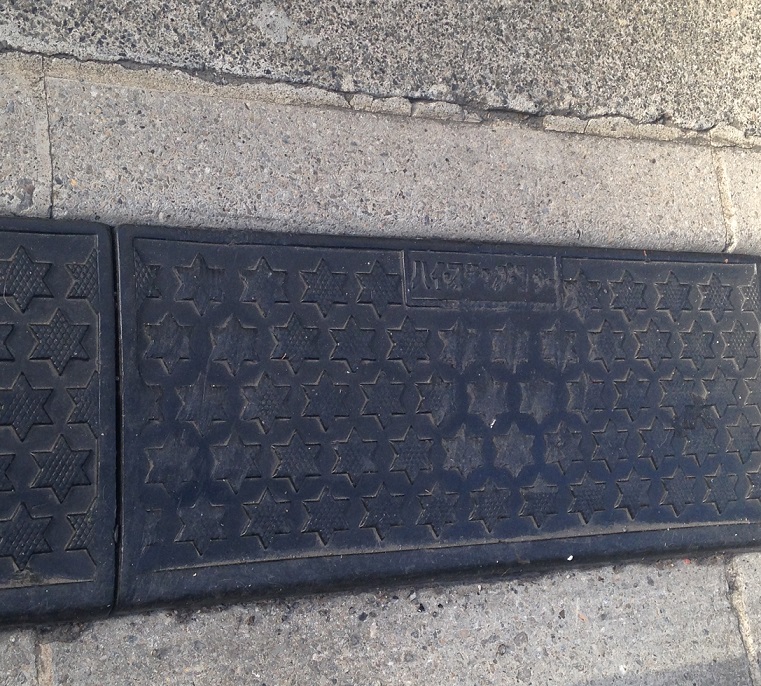
- Subway ticket machines give change in both coins and bills, even large denominations!
- On the subway, many people play games or text. This is true in US cities too, but people also often work or check e-mail. In Japan, there is less of an expectation of getting things done on the train; it’s more about fun.
- Also common on the subway: people fall asleep. This is consistent with the stereotype of tired salarymen, but young kids do it too.
- There are a LOT of bicycles! People ride on the sidewalks most of the time, not on the road.
- Their high-speed trains are known worldwide as being particularly fast and efficient. Our experience was consistent with this expectation: we went from Kyoto to Tokyo (nearly 300 miles) in just over three hours, and we arrived on time to the minute!
Out in Public
- People leave their umbrellas, handlebar covers and basket bags on their bikes when they park them. For that matter, they often leave their bikes unlocked. People at the theatre leave their coats and plastic bags on their seats when they go to use the restroom. Putting your purse on a chair to reserve your seat is a common practice. And at the bowling alley, there was so little fear of customers absconding with their bowling shoes that they let you pick out your own instead of keeping them behind a counter! The fear of theft is much lower than in the US.
- There are vending machines everywhere. Most of them have soft drinks and caffeinated beverages, but some dispense cigarettes, toys, beer, or even entire meals. Both the meals and the coffee come out hot! (I know that some US soda machines dispense ice cold drinks, but I find that to be the exception – and hot is more important to me, anyway.)

- Taxi doors open and close automatically. Some say that drivers get annoyed if you open or close the door yourself. That said, we didn’t test this, because cabs are very expensive in Japan. I’m not sure who can afford to take them.
- Buildings are constructed to withstand some pretty significant earthquakes without sustaining damage. Everything has some slack built into it, from bridges to foundations. This is why there have been several recent 5+ magnitude earthquakes, but no damage was reported. We even felt a few earthquakes while we were there, but no one but us seemed to react to them at all.
- A lot of apartment buildings or single-family homes in the downtown area have pots of flowers and plants out front. I suspect because everything else is quite cement-based, and people miss the greenery. They’re quite pretty.
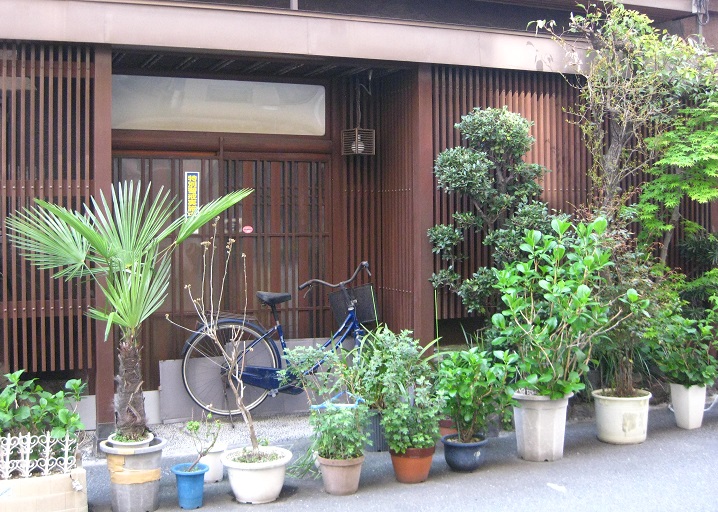



Pingback: Surprising Things About Tokyo - Novelty Buffs
Pingback: You Have to Visit This Tokyo Restaurant - Novelty Buffs
Pingback: What is Japanese Food, Anyway? - Novelty Buffs